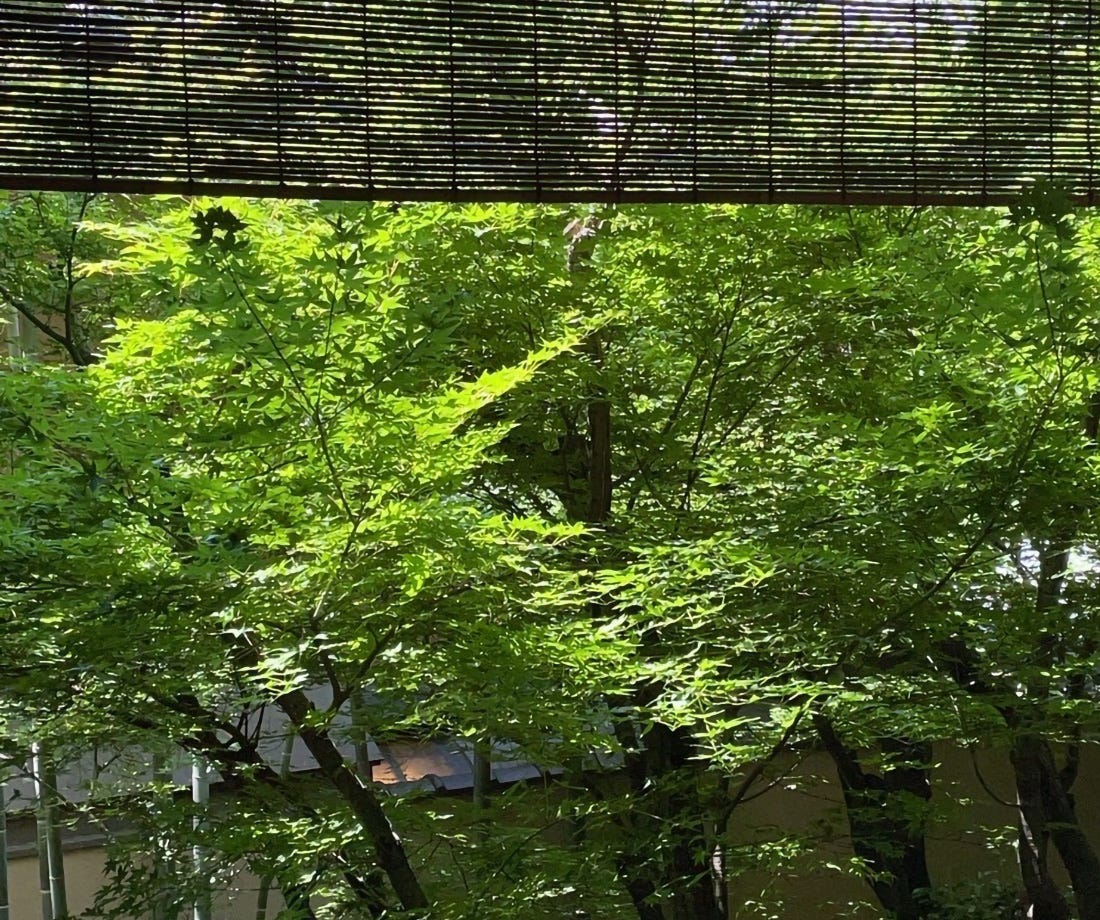
Introducing our new article series with writer Maha Harada. Dive deeper into the world of pearls through her essays and stories exclusive to Mikimoto.
Vol.3
My promise to Vermeer
If I get to see the exhibition, I’ll dedicate a story to it.
That’s the promise I made. To Vermeer.
As an art historian and writer, I found myself out of options in midwinter Amsterdam.
Desperate to see the sold-out Vermeer exhibition,
I rushed over from Paris without a plan...
Part 2
Read Part 1Vermeer’s paintings tell stories. That’s the thought that occupied my mind during my journey from Paris to Amsterdam on the Eurostar. They’re very small, Vermeer’s works. Incredibly small. But that makes them even more fascinating. It makes you want to lean forward to the painting as much as possible to take it all in, just like you would bring your ears and cheeks closer to your lover so as not to miss their sweet remarks.
The artist has cleverly hidden a magnet in the paintings to inexorably draw the viewers in — dots of light or “highlights.” The people in Vermeer’s paintings, especially women, are clad in light particles. Some on their lips, some in their eyes, on the ends of their tied-up blonde hair, on the rim of a milk pitcher, and of course on their pearl necklace and round drop earrings. Just by placing a pure white dot with the tip of an ultra-thin brush, he was able to imbue these women with the most beautiful glow. How could a touch of highlight with a brush tip make them so fresh-looking and full of life? Without exaggeration, this is a technique that can only be described as magic.
Vermeer’s works do not portray empty pipe dreams that are only pretty to look at. He depicted women living real lives in 17th century Netherlands. Women falling in love, dumping someone, and getting dumped in their daily lives. Writing love letters, reading love letters, playing the virginal, enjoying the lute, standing by the window, and wearing their beloved pearl necklace and earrings that were gifted to them.
When you look closely at them, you start to hear their voices. They laugh, speak, tear up, breathe, and hold their breath. You begin to feel as though you’re sharing each one of these moments with them. One after another, the remarkable stories of these women quietly but unquestionably emerge from the paintings.
If... If I could somehow find a way to see the Vermeer exhibition in Amsterdam... If I get to meet Vermeer... Then, I’ll write a story. A story dedicated to you, the master of light. I made that promise to Vermeer on my way to Amsterdam. Well, without him knowing.
But it’s easier said than done. I knew there weren’t any tickets left anywhere. Even if I visit the Members’ desk at the Rijksmuseum, I’m bound to be dismissed with the words, “Tickets are sold out.” Besides, I don’t even have a membership there.
What I do have are the membership cards for PEN International and International Council of Museums (ICOM). They prove that I’m a professional writer and a supporter of international museum activities, and frequently do wonders at museums around the world. I’ve been granted entry to all types of museums and exhibitions in the past thanks to these two cards serving as a special pass. So as always, I came on this trip with my special pass equipped in my bag.
It was 2pm when I arrived at the hotel. Right before checking in, I phoned the Rijksmuseum just in case. I wanted to check whether they had any same-day tickets available or whether they could let me in through my PEN International or ICOM membership card. But the call never got through. I gathered that the only way forward is to inquire in person, and swiftly headed to the reception.
“Welcome to our hotel.”
I was greeted by a warm male receptionist dressed elegantly in black.
“Is this your first stay with us?”
“No, I’ve stayed here many times. I’ve even lost count,” I told him without stretching the truth.
“Thank you for choosing us again. We’re delighted to have you back,” he responded in the smartest way one could imagine.
“As requested, we have you booked in a twin room for single use. Let me get your room key ready. May I offer you a welcome drink?”
“No thank you,” I said hurriedly. “I have somewhere to get to.”
“Certainly.” The receptionist effortlessly placed my key card inside its holder, slid it toward me on the desk, and asked, “Is there anything else I can help you with?”
“Yes,” I answered as I leaned forward over the front desk.
“Can you please get me a ticket to the Vermeer exhibition?”
The receptionist stared at my face for about two seconds, then suddenly pulled an apologetic face. “I feel for you Madam. I imagine everyone visiting Amsterdam is currently looking for a ticket. But I’m afraid that is...”
“Don’t worry, it’s fine,” I butted in before he could finish his courteous response. “I thought it wouldn’t hurt to ask.”
Just as I left toward the elevator, he called out to me. “Madam, please try asking the concierge. You can find the concierge desk in front of the elevator. Our concierges are extremely capable, so they may be able to offer you a solution.”
Over at the concierge desk, a female staff was staring at the computer screen, dressed in a black jacket and wearing her blonde hair up.
“Hello,” I approached her with my best smile. “Your colleague told me that you might be able to help me with a very difficult request.”
She looked up, and in that moment, a pair of small pearls sparkled on her ears.
“Welcome, Madam. Please have a seat.”
She offered me a chair in front of the desk with an encouraging smile on her face.
“How can I help you?”
I sat on the edge of the chair.
“I’d like one ticket to the Vermeer exhibition,” I cut to the chase.
“I’m staying here for two nights from today until the day after tomorrow. I really want to go and see the exhibition during my stay. I desperately want to see it. No, I need to see it.”
I pleaded with all my heart. Truth be told, I had already half given up. There’s no doubt that this hotel occupies the best location in Amsterdam and offers both excellent service and a prestigious reputation. But how likely is it that they would try to help a demanding tourist begging for a platinum ticket that has long been sold out? If I were a concierge at this hotel, I would most likely stare at the guest’s face for two seconds and opt to decline politely saying, “Unfortunately...”
However, she didn’t take that route. She looked into my face and asked, “You need to see it, you said. Why do you need to see it?"
I was taken aback by her unexpected question. Why do I need to see it? Well, there’s only one answer.
“I promised Vermeer I’d go,” I said, firmly and again with all my heart.
“I’m a writer and art historian. I’ve published many novels based on art history, and I’ve been hoping to write a story on Vermeer someday. But to do so, I need to do some first-hand research. And this exhibition would be the perfect opportunity for that. I knew this... but I failed to get a ticket.”
Admittedly, I made my story sound more dramatic than it really was. It’s true that I’ve been wanting to write a story on Vermeer, but I had no clue when that would be. That’s why I was late in searching for a ticket. Anyway, I thought I’d make my way to Amsterdam and see if there could somehow be a miraculous turn of events...
“If I get to see the exhibition, I’ll write a story dedicated to Vermeer. That’s the promise I made. To Vermeer.”
Just as I finished speaking, I suddenly realized that I must be coming across as a very peculiar guest. Feeling a little embarrassed, I gave her my name and the URL of my English website.
Even after hearing about my strange promise to Vermeer, the concierge remained as attentive and friendly as before. She performed a quick search on the internet and confirmed that I was a writer with a large portfolio of novels based on art history.
“Your books seem interesting. I’d love to read them. Do you have any in English?”
“I’ve had a few short stories translated into English but there aren’t any English versions of my long novels. There’s a French one...”
“If you write a story about Vermeer, will it be translated into English?”
“Hmm, I’m not sure. But... in any case, I won’t give up hope.”
She kept her gaze on the computer for a while, then looked up at me.
“I actually have a ticket to the Vermeer exhibition,” she revealed suddenly.
Maha HARADA
b. 1962 Tokyo, Japan
Based between Tokyo, Paris, Kyoto, and Nagano, Maha Harada is a creative visionary and exceptional storyteller who has produced world-class, category-defying writing.
Harada is one of the founding curators of Tokyo’s acclaimed Mori Art Museum; when it was established, she was sent to represent the Museum as a project researcher at its principal cultural partner, The Museum of Modern Art, New York. It is for this reason that Maha Harada is renowned as Japan’s leading creator of art novels and art entertainment.
She is among Japan’s most talked-about writers and creatives, and her extraordinary experiences give her an unparalleled ability to blend art and literature. Harada’s art novels journey into the past to breathe fresh life into some of the world’s most beloved artists, who still enchant countless people today. These stories transcend time and generation crossing the boundaries of nation and region. At the same time, they are rooted in the experiences of a woman born and raised in Japan.



 Back
Back 



 Back to Everything in harmony
Back to Everything in harmony